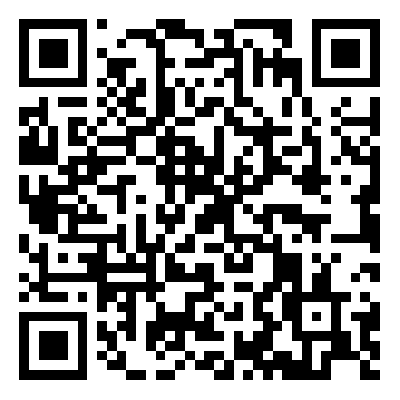
Ultima Markets App
Trade Anytime, Anywhere
Important Information
This website is managed by Ultima Markets’ international entities, and it’s important to emphasise that they are not subject to regulation by the FCA in the UK. Therefore, you must understand that you will not have the FCA’s protection when investing through this website – for example:
- You will not be guaranteed Negative Balance Protection
- You will not be protected by FCA’s leverage restrictions
- You will not have the right to settle disputes via the Financial Ombudsman Service (FOS)
- You will not be protected by Financial Services Compensation Scheme (FSCS)
- Any monies deposited will not be afforded the protection required under the FCA Client Assets Sourcebook. The level of protection for your funds will be determined by the regulations of the relevant local regulator.
Note: Ultima Markets is currently developing a dedicated website for UK clients and expects to onboard UK clients under FCA regulations in 2026.
If you would like to proceed and visit this website, you acknowledge and confirm the following:
- 1.The website is owned by Ultima Markets’ international entities and not by Ultima Markets UK Ltd, which is regulated by the FCA.
- 2.Ultima Markets Limited, or any of the Ultima Markets international entities, are neither based in the UK nor licensed by the FCA.
- 3.You are accessing the website at your own initiative and have not been solicited by Ultima Markets Limited in any way.
- 4.Investing through this website does not grant you the protections provided by the FCA.
- 5.Should you choose to invest through this website or with any of the international Ultima Markets entities, you will be subject to the rules and regulations of the relevant international regulatory authorities, not the FCA.
Ultima Markets wants to make it clear that we are duly licensed and authorised to offer the services and financial derivative products listed on our website. Individuals accessing this website and registering a trading account do so entirely of their own volition and without prior solicitation.
By confirming your decision to proceed with entering the website, you hereby affirm that this decision was solely initiated by you, and no solicitation has been made by any Ultima Markets entity.
I confirm my intention to proceed and enter this website Please direct me to the website operated by Ultima Markets , regulated by the FCA in the United Kingdom加元匯率走勢解析:如何利用加元在外匯市場中獲利
加元(CAD)在全球外匯市場中是一個重要的交易貨幣,作為資源型經濟的代表,加元的波動常常反映了國際大宗商品價格的變動,特別是原油價格。隨著全球經濟形勢的變化,加元匯率也不斷波動,為投資者提供了獨特的交易機會。無論是外匯交易新手還是經驗豐富的投資者,都能夠透過對加元匯率的掌握,制定出合適的交易策略。本篇文章將深入解析加元匯率的影響因素,以及如何在Ultima Markets平台上利用加元進行外匯交易。

加元匯率的主要影響因素
1. 原油價格與加元匯率的關聯
資源型貨幣
加元是典型的資源型貨幣,其價值與加拿大的資源出口息息相關,特別是原油。作為世界第四大石油生產國,加拿大的石油出口對加元匯率有著直接的影響。當原油價格上漲時,加元的價值通常會上升,因為市場預期加拿大的石油出口收入將增加。相反,當原油價格下跌,加元往往會走弱,這是因為加拿大的出口收入將受到壓縮。
全球需求與供應變化
不僅僅是原油價格本身,加拿大的能源市場與全球需求和供應情況緊密相連。比如,若全球經濟增長加速,對能源的需求上升,這將促使原油價格上漲,進而帶動加元匯率上漲。反之,若全球經濟放緩,對石油需求減少,則可能對加元匯率造成壓力。
2. 加拿大經濟數據與政策
經濟增長與失業率
加元的匯率也與加拿大的經濟數據密切相關。當加拿大的GDP增長強勁、失業率下降時,市場通常對加拿大經濟前景抱有信心,這有可能推高加元匯率。而如果經濟增長放緩,失業率上升,則可能對加元匯率產生負面影響。
加拿大央行的貨幣政策
加拿大央行(Bank of Canada)的利率政策對加元匯率也有重要影響。當加拿大央行加息時,會提高持有加元的回報率,從而吸引投資者購買加元,推高其匯率。反之,如果央行降息或進行貨幣寬鬆,則可能會導致加元匯率下跌。
3. 美國經濟及美元走勢
作為全球最大的經濟體,美國的經濟狀況對加元匯率也有顯著影響。由於加元與美元的交易量大且兩者匯率的變動關聯性強,因此美國的經濟數據、利率政策以及美元的走勢常常會影響到加元的表現。美國經濟數據強勁,美元升值時,通常會對加元構成壓力。
如何在Ultima Markets平台上交易加元
1. 開設交易賬戶
要開始交易加元,首先需要在Ultima Markets平台上開設一個交易賬戶。通過真實戶口,投資者可以選擇不同的賬戶類型,根據自己的風險偏好與交易需求選擇最合適的賬戶。開設賬戶後,你可以利用提供的交易工具和資源,開始對加元進行交易。
2. 利用模擬賬戶進行實戰演練
如果你是外匯交易新手,建議先利用模擬賬戶來進行加元匯率的模擬交易。這樣可以在無風險的環境中熟悉市場動態和交易策略,並學習如何使用Ultima Markets平台上的各種交易工具。
3. 設定止損和止盈以管控風險
在進行加元交易時,風險管控至關重要。設定止損和止盈是有效的風險管理工具,可以幫助你在市場波動中保護資本,避免過度損失。Ultima Markets平台提供靈活的止損和止盈設置,讓投資者可以根據加元匯率的波動情況,及時調整交易策略。

加元匯率的短期與長期交易策略
1. 短期交易策略:把握加元匯率的即時波動
日內交易
短期交易者可以根據加元匯率的即時波動進行日內交易。由於加元匯率與原油價格密切相關,當原油市場出現短期大幅波動時,投資者可以通過Ultima Markets平台實時進行加元買賣,從中獲取利潤。
利用消息面進行操作
市場對加拿大的經濟數據、央行政策等消息非常敏感。短期交易者可以根據這些消息,快速調整交易策略。例如,在加拿大央行宣布加息或降息的消息後,投資者可以立即進行交易,預測加元匯率的走勢。
2. 長期交易策略:抓住加元長期走勢
趨勢交易
長期交易者可以通過分析加元匯率的長期趨勢,選擇合適的入場點。這些交易者通常會根據加元匯率與原油價格、加拿大經濟數據等的長期關聯,預測未來的匯率走勢,並保持持倉數周甚至數月。
風險分散與資金管理
長期交易者需要更加重視風險管理與資金配置。通過適當分散交易品種和資金,降低因加元匯率波動所帶來的風險,並提高長期投資的穩定性。

FAQ:常見問題解答
1. 影響加元匯率的因素有哪些?
原油價格波動
由於加拿大是石油出口大國,原油價格變動對加元匯率有著直接影響。當原油價格上漲時,加元通常會走強。
加拿大的經濟數據
如GDP增長、失業率等經濟指標會影響加元匯率。強勁的經濟數據有助於提升投資者對加元的信心。
加拿大央行的政策
央行的加息或降息決策將直接影響加元的價值。加息通常會推高加元匯率,反之則可能讓加元走弱。
2. 如何預測加元匯率的走勢?
預測加元匯率的走勢需要綜合分析各種因素,包括原油市場的變化、加拿大經濟數據的表現以及全球金融市場的風險情緒。投資者可以通過技術分析和基本面分析來評估加元匯率的未來走勢,並根據分析結果進行交易決策。
結論
加元作為全球外匯市場中重要的交易貨幣,其匯率波動受到多種因素的影響,尤其是原油價格和加拿大經濟狀況。透過對加元匯率的深入了解,投資者可以制定出更有利的交易策略,無論是短期的快速操作,還是長期的穩健布局。利用Ultima Markets平台提供的各種工具和資源,無論是新手還是經驗豐富的投資者,都能在加元匯率的交易中找到合適的切入點。












